Land Invertebrates
Media
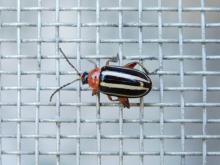
Species Types
Scientific Name
About 2,000 species in North America
Description
Leaf beetles, or chrysomelid beetles, are members of a large, diverse, often very colorful beetle family. As the name suggests, they eat leaves and other plant parts and are common on foliage.
Media

Species Types
Scientific Name
Popillia japonica
Description
Despite its decorative bronze wing shields, metallic green thorax, and black-and-white striped abdomen, the Japanese beetle is a serious agricultural pest.
Media
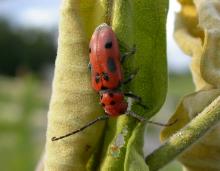
Species Types
Scientific Name
About 1,000 species in North America north of Mexico
Description
Longhorned beetles are elongated and cylindrical, with antennae that are at least half the length of the body — sometimes much longer. The larvae are grubs that bore in wood or other plants. Some are serious pests.
Media
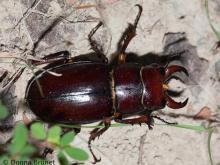
Species Types
Scientific Name
About 40 species in North America north of Mexico
Description
Stag beetles are a family that, though not very colorful, have prominent pincers! Male stag beetles usually have enlarged, sometimes astonishing jaws. These “antlers” give rise to the common name.
Media
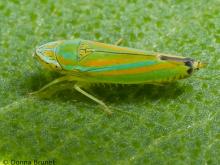
Species Types
Scientific Name
More than 3,000 species in North America north of Mexico
Description
The leafhoppers are a large and diverse family of sap-sucking, hopping insects. You can distinguish them from similar groups of hoppers by the hind legs, which have at least one row of small spines on the hind tibiae (“shins”).
Media
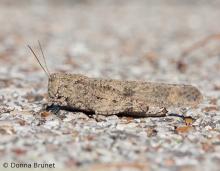
Species Types
Scientific Name
About 620 species in North America
Description
The short-horned grasshopper family includes many familiar jumpers. They are named for their antennae, which are relatively short compared to those in the "long-horned" or katydid group.
Media
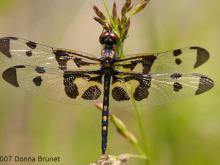
Species Types
Scientific Name
Species in the suborder Anisoptera
Description
Like damselflies, dragonflies have long bodies, two pairs of long, membranous, finely veined wings, and predaceous aquatic larvae. Dragonflies typically hold their wings stretched outward, horizontally.
Media

Species Types
Scientific Name
Diapheromera femorata, Megaphasma denticrus, and others
Description
Walkingsticks are long, slender insects that are perfectly camouflaged to look like brown or green twigs. Most species are tropical, but some types are found in Missouri.
Media

Species Types
Scientific Name
About 84 species in North America.
Description
Many blow flies are so shiny and colorful they’re called greenbottles and bluebottles. But pretty as they are, it’s hard not to be repulsed by their larval diets.
Media
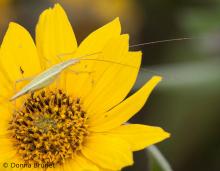
Species Types
Scientific Name
About 20 species in North America in subfamily Oecanthinae
Description
Tree crickets, or pale bush crickets, are a subfamily of crickets that are little seen but often heard. True to their name, instead of living on the ground, they live in trees, bushes, and tall herbaceous plants.
See Also



Media

Species Types
Scientific Name
Cisseps fulvicollis
Description
The yellow-collared scape moth is more often “orange-collared.” And whether you think it looks more like a firefly or a wasp, it’s still a moth!
Media

Species Types
Scientific Name
Nearly 150 species in North America north of Mexico
Description
Slim, delicate plume moths are instantly recognizable by their T-shaped silhouette, long legs, and muted shades of tan and brown. It can be hard to separate the various species.
Media

Species Types
Scientific Name
Pyrrharctia isabella
Description
Not many people know the adult Isabella tiger moth when they see one, but we’re all acquainted with its caterpillar, the woolly worm, or woolly bear.
About Land Invertebrates in Missouri
Invertebrates are animals without backbones, including earthworms, slugs, snails, and arthropods. Arthropods—invertebrates with “jointed legs” — are a group of invertebrates that includes crayfish, shrimp, millipedes, centipedes, mites, spiders, and insects. There may be as many as 10 million species of insects alive on earth today, and they probably constitute more than 90 percent all animal species.





















